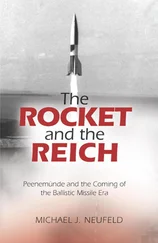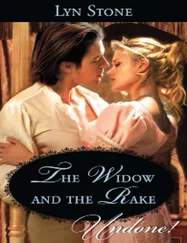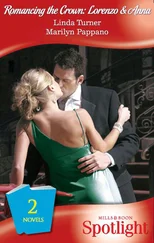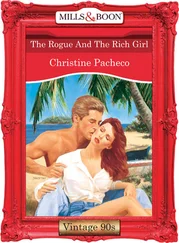The age of paranoia brought out Nixon’s brilliance as a political performer. He had a deep, demagogic instinct for playing on the public’s darkest fears. Robert Stripling, his right-hand man on HUAC, came to believe that there was no genuine ideological passion in Nixon’s pursuit of the “traitor” Hiss, just the same cold-blooded calculation he had brought to his campaign against Jerry Voorhis. “ He was no more concerned about whether Hisswas [a Communist] than a billy goat,” the HUAC investigator later remarked.
This was not an entirely fair assessment of Nixon. The young politician clearly had developed deeply felt convictions about the brutality of the Communist system. When his Marshall Plan tour took him to Greece, Nixon was horrified to meet a young woman whose left breast had been hacked off by Communist guerrillas. He returned from the trip with a firm belief in the implacability of Communist regimes, and the conviction that they only understood force—a view that he would modify when he became president and engaged both the Soviet Union and China in strenuous diplomacy.
But at home, Nixon’s anti-Communism reeked of political cynicism, earning him the nickname “Tricky Dick.” He smeared his opponents with reckless abandon, labeling them as Reds or “dupes” or, in the case of his 1950 senatorial opponent, Helen Gahagan Douglas, a woman who was “pink down to her underwear.” Nixon never proved that Hiss was a card-carrying Communist or a Soviet agent, but, with typical hyperbole, he treated him like he was a mortal threat to the American way of life.
The highlight of Nixon’s obsessive, Javert-like pursuit of Hiss came when Chambers dramatically led HUAC investigators to a pumpkin patch on his Maryland farm, where he produced a hollowed-out pumpkin containing sixty-five pages of retyped State Department documents, four pages of copied government documents in Hiss’s handwriting, and five rolls of classified film—all of which, Chambers claimed, had been slipped to him by Hiss in 1938. Nixon staged a dramatic return to Washington from a Caribbean vacation cruise, with the help of a Coast Guard rescue plane, in order to publicize the so-called pumpkin papers. The documents, which seemed to prove that Hiss did have an espionage connection to Chambers, sealed the diplomat’s fate. He was indicted in December 1948 by a federal grand jury for lying to Congress.
Hiss continued to vigorously deny his guilt, insisting that the pumpkin papers had been forged by Chambers. Neither he nor his wife, Priscilla, could have retyped the State Department documents, said Hiss, because they had given away the Woodstock model typewriter that they allegedly used to copy the classified memos before 1938. Four jury members at his first deadlocked trial believed Hiss, agreeing that someone other than Hiss or his wife had retyped the State Department documents. Hiss’s suspicion that he was framed was given further credence years later by John Dean, the former White House attorney who became a key witness in the Watergate scandal that ended the Nixon presidency. Writing in his memoir Blind Ambition , Dean alleged that Nixon told fellow White House aide Charles Colson, “We built [the typewriter]in the Hiss case,” implying that with the help of FBI technicians, Nixon had used a replica of the Woodstock machine to trap his prey.
Hiss’s second trial did not go in his favor. Among the witnesses who testified against him was John Foster Dulles, who disputed Hiss’s recollection of the events leading to his resignation from the Carnegie Endowment. It was the final nail in Hiss’s coffin by his former patron. In January 1950, Hiss was convicted of perjury and sentenced to federal prison, where he would serve three and a half years. Meanwhile, Chambers, a man who had launched his writing career by working for the Communist Party press, continued to enjoy his new life as a polemicist for the conservative media, first in Henry Luce’s plush Time-Life tower and then in the more modest Manhattan offices of William F. Buckley Jr.’s National Review .
For Nixon, the Washington spy spectacle demonstrated not only the moral turpitude of Alger Hiss but the intellectual bankruptcy of the liberal elite. His successful pursuit of Hiss brought him national fame, Nixon later observed, but it also attracted the “ unparalleled venomand irrational fury” of the liberal intelligentsia, which saw Hiss as a New Deal icon. He was convinced that he would never be forgiven by “substantial segments of the press and intellectual community” for exposing how the New Deal had been compromised by the Communist underground. Nixon brooded that it was this “hatred and hostility” that might have cost him the 1960 presidential election.
Chambers, too, saw his decision to incriminate Hiss as part of a broader assault on New Deal–style government and its “drift toward socialism.” In his 1952 memoir Witness , Chambers conflated the Roosevelt presidency with the evils of Communist rule. The New Deal, he wrote, “was not a revolution by violence. It was a revolution by bookkeeping and lawmaking.” Both types of revolution, he argued, led to a triumph of the state over the individual.
The Cold War furies that Nixon and the Dulles brothers helped to unleash scoured all nuance and charity from American politics. There were indeed a few committed Communist agents embedded here and there in Roosevelt’s bureaucracy, such as Nathan Silvermaster, a Russian-born economist with the War Production Board during World War II who was dedicated to the dream of a Soviet America. But by far the more common “traitors” were men like Hiss: well-educated, progressive idealists. They were the type who had come of age after the stock market crash of 1929 and had grown sick of a hands-off government that allowed encampments of hungry and homeless people to spring up all over the country without taking action.
When Roosevelt was elected in 1932, and Hiss received a telegram from Felix Frankfurter, his former Harvard law professor and an adviser to FDR, urging him to come work for the new administration “on the basis of national emergency,” Hiss knew that he had to sign up. For young New Dealers, “ it was a call to arms
Конец ознакомительного фрагмента.
Текст предоставлен ООО «ЛитРес».
Прочитайте эту книгу целиком, купив полную легальную версию на ЛитРес.
Безопасно оплатить книгу можно банковской картой Visa, MasterCard, Maestro, со счета мобильного телефона, с платежного терминала, в салоне МТС или Связной, через PayPal, WebMoney, Яндекс.Деньги, QIWI Кошелек, бонусными картами или другим удобным Вам способом.











